by Ashley Stanziola, Technical Applications Engineer II at KYOCERA AVX
The growing trend of smart cities and smart homes has become a major topic in today’s industry. Smart devices require both analog and digital signals to have accurate data procurement from sensors, data transfer from communication ICs, and data processing. However, signals can encounter issues in the system such as ringing, crosstalk, and signal reflections. These issues can cause signal degradation that can distort the data, leading not only to latency but also reduced signal accuracy. Therefore, it is becoming essential to design these devices efficiently and establish a reliable and acceptable signal integrity.
There are many components and designs that can enhance signal integrity. One of these components is antennas. Choosing a reliable antenna with the appropriate parameters ensures a reliable signal transfer and improves communication. Another component would be crystals and oscillators. Timing components are extremely important for signal integrity because they provide precise, stable frequencies across the entire system. Whether it be for signal processing, data conversion, real time clocking, or data transmission, smart cities and smart home devices need crystals and oscillators to synchronize data and operate correctly.
Even though there are many solutions to reduce latency and preserve the signal, decoupling capacitors and filters are the most used because they improve the signal in many aspects. The first way they can improve signals is that they can be implemented as an impedance matching circuit that reduces signal reflection. If a system contains too much reflection, it can cause signal interference, excess power consumption, signal distortion, and it can reduce the performance by lowering the signal strength. Essentially, reflected signals are a loss of power or data that must be minimized as much as possible to improve performance and maintain operation. Implementing impedance matching with decoupling capacitors and filters will reduce these issues and improve power transfer, signal speed, and signal performance.
The next way decoupling capacitors improve signals is by suppressing voltage fluctuations. Decoupling capacitors will act as a small energy storage bank by absorbing or supplying current. This mechanism stabilizes the ground plane by preventing ground bounce and reducing noise introduced to ground. Having a device with inadequate grounding can be detrimental to a system because it introduces EMI, crosstalk, and power integrity issues. If these issues go uncorrected, a device will not only have power issues, but the data will be corrupt or unable to transmit appropriately.
One more way decoupling capacitors benefit signal integrity is by reducing noise. As previously stated, decoupling capacitors reduce noise by absorbing transients. However, they also reduce noise by providing a low impedance path to ground. Having an alternative path allows for high frequency noise to travel to ground instead of continuing in the circuit. With noise such as ground loop, thermal, coupling, and EMI being shunted to ground, the power pins on ICs are protected, signal coupling is reduced, and signal distortion is minimized.
KYOCERA-AVX has been dedicated to offering a wide portfolio of RF capacitors and filters specifically designed to handle any signal integrity issue. The table below illustrates the many RF capacitor offerings that can be used as decoupling or filter capacitors.
The Accu-P Series is a thin film technology with ultra-low ESR, high Q, and extremely tight tolerances. These characteristics, along with their lot-to-lot repeatable performance and their RF power handling capabilities, make them desirable for an array of application needs; anywhere from antenna matching to amplifier matching. With packaging size from 0201 (0.6mm x 0.325mm) to 0805 (2.01mm x 1.27mm), these capacitors are perfect for smaller IoT devices.
Alternatively, the 600 Series is a multilayer ceramic capacitor designed exclusively to meet various RF needs. Like the Accu-P Series, the 600 Series also has ultra-low ESR and a high Q with case sizes: L (1.02mm x 0.51mm), S (1.6mm x 0.81mm) and F (2.01mm x 1.24mm). With the intent to improve large signal applications and bring a new level of performance to amplifier circuits, the 600 Series was designed specifically with ultra-low ESR values, as well as high voltage ratings. Additionally, these capacitors exhibit excellent heat conducting properties to improve reliability and lifetime. When designed in large signal applications, the 600 Series operate cooler and exhibit less leakage current. Members of the 600 Series have a slightly higher tolerance (±0.05pF minimum) compared to Accu-P (±0.01pF minimum). However, they have higher capacitance value options and more energy density.
In addition, there are also a variety of filter options; whether it be LP (Low Pass), BP (Band Pass), HP (High Pass), or Feedthru Filters needed for signal integrity. The LP, BP, and HP filters are high quality thin film solutions with both SMD and LGA options. With their repeatable electrical performance, superior RF characteristics (low insertion loss and steep attenuation), wide operating frequency (340MHz to 32GHz), power handling capabilities (1W to 20W), and case sizes from 0402 (1mm x 0.58mm) to 2816 (7mm x 4mm), KYOCERA AVX’s filters are an ideal filter solution for tuning RF parameters.
The Feedthru Filters are 3-terminal SMD ceramic capacitors that can be used as LC-T filters or as broadband EMI noise filters. Feedthru Filters are designed with low Q and have a minimized parallel inductance while also having a maximized series inductance. This design allows for a broad frequency response, making them more suitable than ferrite beads or parallel decoupling capacitors while dealing with broadband attenuation. They are offered with X5R (–55°C to +85°C), X6S (–55°C to +105°C), X7R (–55°C to +125°C), and C0G/NP0 (–55°C to +125°C) dielectrics, with a capacitance range of 22pF to 15μF and case sizes 0402 (1mm x 0.5mm) to 1206 (4.54mm x 1.09mm).
Smart devices are technologies that are not only convenient due to their operation, but also due to their ability to work in tangent of one another. With more devices being introduced in smart cities and smart homes, it is becoming increasingly important to establish reliable signals. These devices rely heavily on signal integrity to communicate, process, and function. If there is too much degradation, there is a cause for concern, not only for individual devices, but also for the entire system.

